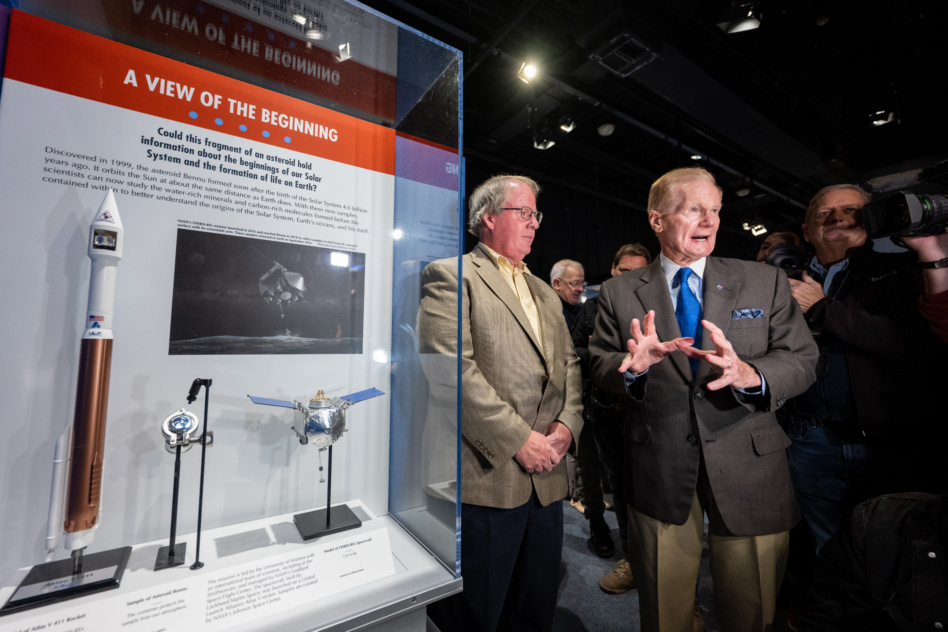A small piece of the asteroid Bennu can now call a very ritzy neighborhood home, alongside many meteorites and just next door to the Hope Diamond.
Officials unveiled the asteroid sample to the public on Friday with a ceremony at the Smithsonian Natural History Museum’s meteorite gallery in DC. The pea-sized piece of Bennu is in a stainless steel container, flanked by models of both the OSIRIS-REx spacecraft and the Atlas V rocket that launched the mission.
“It’s all a part of our quest to understand or try to understand who we are, what we are, where we are in the vastness of this cosmos,” NASA Administrator Bill Nelson said at the museum.
Some context: The OSIRIS-REx spacecraft landed in Utah in September with asteroid material on board after a seven-year mission to Bennu and back. Early studies show that the rocks contain a high concentration of carbon and water—two key building blocks for life.
Researchers found bonus rocks on the top of the main collection unit, one of which is on display in the museum. Officials are still trying to loosen two stuck bolts of the main chamber without compromising the sample and exposing it to Earth’s atmosphere, Nelson said.
Precious cargo: Researchers looked for a rock to display publicly that was both typical of the overall sample and durable enough to travel to DC. Tim McCoy, the museum’s curator of meteorites, flew from Houston to DC with the sample in his bag, before boarding the metro to get to the museum.
What’s next: In about six months, officials will release a catalog to the broader scientific community that lists the rock samples available for study, McCoy said. Researchers can then apply to work with the samples for specific studies that will be reviewed by NASA, and some pieces of the asteroid will be preserved for future generations to study as well.
“This is not a secretive club, and we’re really trying to make sure that the entire international scientific community benefits from this work,” he said.




